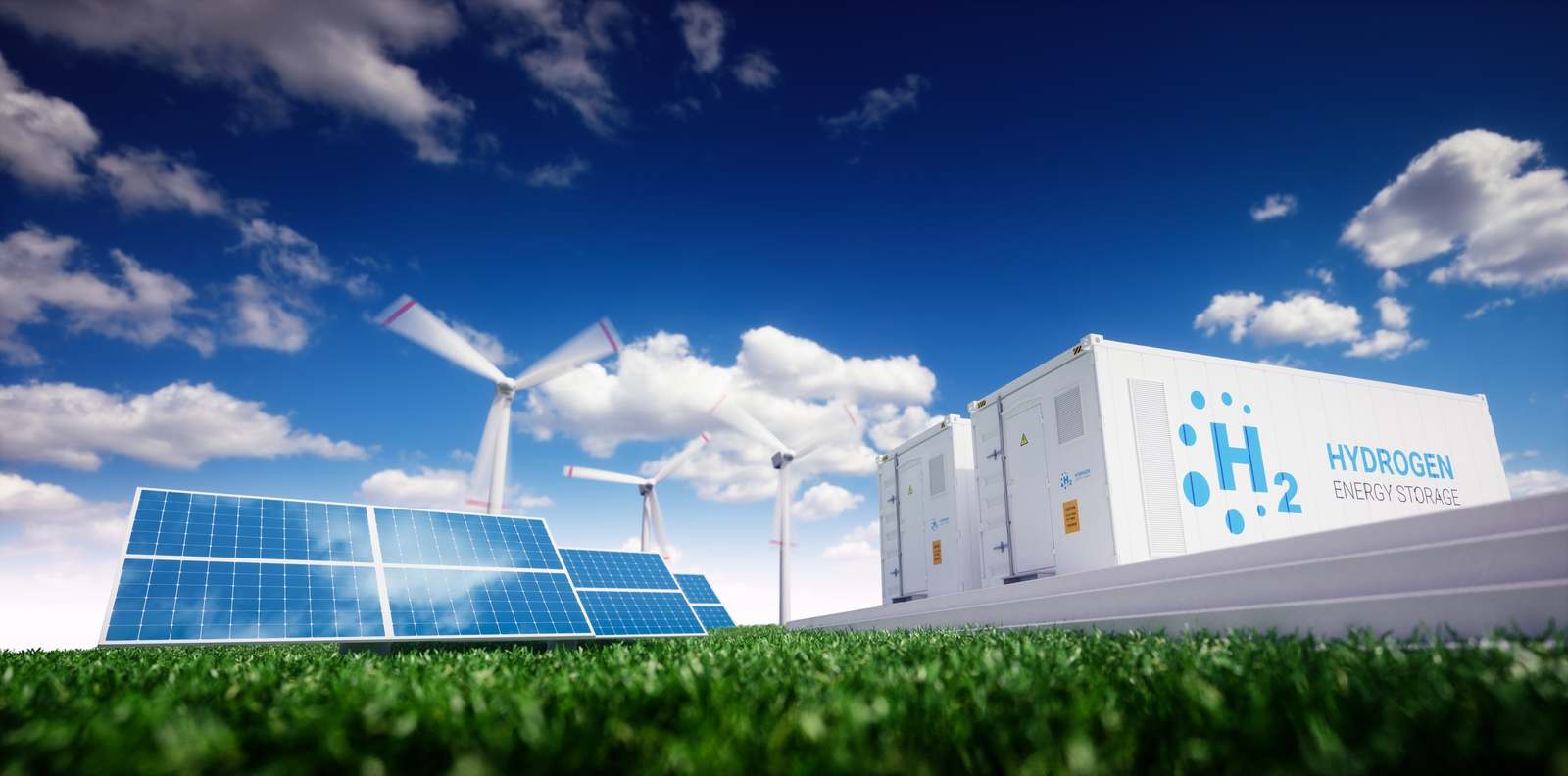
Europe could be our biggest green hydrogen export market: What needs to happen to get trading off the ground?

Europe would be our biggest green hydrogen export market. What needs to happen for us to get there? The global green hydrogen industry is “entering hockey stick territory: the point where it sees a sudden and sharp turn upward,” according to low carbon industries researcher BloombergNEF. The big three economies — the EU, US, and China — are set to drive that demand growth as they look to secure green power supply, and are busy building supply chains and infrastructure to accommodate the anticipated green hydrogen boom. Meanwhile, our abundant renewable generation potential and proximity to Europe is already attracting pledges of major investment from global firms to build local green hydrogen facilities for export to the EU. So what needs to happen to get green hydrogen flowing from here to Europe?
REFRESHER- Green hydrogen + green ammonia: When hydrogen is combusted with oxygen in a fuel cell it produces zero-carbon energy, making for an environmentally-friendly burn. However, the vast majority of hydrogen produced globally today is derived from fossil fuels — some 96% of the hydrogen consumed in Europe comes from natural gas. There is another way: Hydrogen can be produced by passing an electric current through water to split it into hydrogen and oxygen, a process known as electrolysis. Use renewable energy to power that electric current, and you have green hydrogen. Green ammonia is produced through the reaction of green hydrogen and nitrogen at high temperatures, in a process also powered by renewables. Our explainer lays it all out.
The EU wants a 50/50 split between homegrown and imported renewable hydrogen: Spurred by the need to wean itself off Russian fossil fuels and reach net-zero emissions targets, the European Commission last year introduced its REPowerEU clean energy plan. Under the plan, the bloc will look to produce 10 mn tons of renewable hydrogen and import another 10 mn tons from third countries annually by 2030. Imports would be split 60/40 between renewable hydrogen and green ammonia.
And we’re laying the groundwork to meet that demand: If all nine green hydrogen and ammonia facilities international power companies last year agreed to build here go ahead, they would collectively produce up to 7.6 mn tons of green ammonia and 2.7 mn tons of hydrogen a year when fully operational. The projects need some USD 83 bn in investment to get off the ground. And that’s just the beginning — the government signed another seven MoUs for potential green hydrogen projects in December, and will soon unveil its national hydrogen strategy detailing how it plans to develop the nascent industry.
Most of this hydrogen would be destined for the heavy industry + transport sectors: Green hydrogen can be used to generate electricity for any purpose — but most think its best potential lies in replacing fossil fuel use in “hard-to-decarbonize” heavy industries, including steel, petrochemicals, and heavy-duty transport, according to BloombergNEF. The EU wants more of its ammonia and refining plants to run on renewable hydrogen, and is aiming for 30% of its primary steel production to run on green hydrogen by 2030. The bloc is also hoping renewable hydrogen will increasingly replace Russian natural gas as a green fuel for trucks, planes, and seaborne vessels that transport goods.
But there are some major obstacles to getting an Egypt-EU green hydrogen supply chain in place:
#1- Transportation costs pose a problem for long-distance imports: Green hydrogen is technically difficult and expensive to transport — whether in its original gaseous or liquefied form, Reuters reports. Transportation issues are best solved by keeping supply chains as short as possible — one reason why the International Renewable Energy Agency (IRENA) expects that 75% of global green hydrogen output will be domestically produced and consumed by 2050, according to a 2022 report (pdf).
Our best options: Export green hydrogen-derived products, and build a pipeline to Europe. “Depending on the end use of the hydrogen, it might be more cost-effective to first transform it into a commodity and then ship the commodity instead of the hydrogen itself,” IRENA writes. Those commodities could include green ammonia, methanol, steel, and transport fuels. In the long term, transporting green hydrogen through pipelines may provide a cheaper option than shipping it. By 2050, some 55% of internationally traded green hydrogen will be transported via pipelines, with the remainder shipped in the form of ammonia, IRENA predicts.
Players in the local industry are already thinking along these lines: The country’s first green hydrogen plant — built by a consortium of Norway’s Scatec, Fertiglobe, Orascom Construction, and the Sovereign Fund of Egypt — will feed Fertiglobe’s two existing ammonia plants in Ain Sokhna. Hydrogen Europe CEO Jorgo Chatzimarkakis said at the Enterprise Climate X Forum last year that he imagines we’ll kick off hydrogen exports by sending ammonia and methanol to Europe. He’d ultimately like to see a hydrogen pipeline linking Egypt to Greece and Trieste.
#2- Regulatory issues: EU members have for years been embroiled in disagreement over a draft law that would regulate the bloc’s use of renewables — at the center of which is how to define what “green” means when it comes to hydrogen, Euractiv reports. France is leading a charge to include hydrogen created from “low carbon” sources like nuclear energy in the green framework — while Germany wants to take a stricter renewables-only approach. The bloc is hoping to push the bill through by the summer, but so far hasn’t been able to resolve the conflict, Bloomberg reports.
#3- Global competition — not least from the US: The Biden administration’s landmark Inflation Reduction Act will offer US green hydrogen producers a USD 3.00 tax credit per kilo of hydrogen for their first 10 years of operation. That will push green hydrogen production costs in the US into sub-zero territory in the short term, according to S&P Global. That could spur private sector players to set up shop in the US rather than the EU — “causing a supply crunch and slowing clean H2 developments in Europe,” hydrogen firms told BloombergNEF. Meanwhile, China looks to be setting a goal in place to dominate the global market for electrolysers, the key technology used to separate hydrogen from water, Bloomberg reports.
The silver lining: Biden’s IRA could spur Europe to ramp up green hydrogen incentives. In an apparent response to US incentives, the EU has pledged to develop a renewable hydrogen bank, which will this year launch a pilot that aims to “de-risk the market in Europe, both for domestically produced and imported hydrogen,” EU top climate official Frans Timmermans has said. The EU Hydrogen Bank is set to support domestic green hydrogen producers by covering “100% of the cost gap in comparison to grey hydrogen produced in the EU,” and is exploring ways “to best support access of European consumers to hydrogen imports,” Timmermans said.
We could push for more EU support: COP27 saw the launch of the Global Renewable Hydrogen Forum, which could serve as a venue for Egypt and other emerging players to argue for wealthy countries to provide subsidies for our green hydrogen industries. That would go a long way toward evening-out the distorting effects of the subsidies now promised to US producers under the Biden administration’s Inflation Reduction Act. The forum is just one prong in ongoing cooperation with European partners on green hydrogen, including support from the European Bank for Reconstruction and Development (EBRD) to draft our national green hydrogen strategy, and major financing from both Europe and the US to build up renewables capacity that would feed green hydrogen facilities.
Your top green economy stories for the week:
- More green financing for local SMEs: The EBRD, the EU, and the Green Climate Fund (GCF) will provide USD 175.5 mn to local banks to on-lend to green projects and SMEs in Egypt.
- Egypt’s hydroponic startup Schaduf teamed up with Saudi’s agritech company Mishkat to boost the kingdom’s sustainable farming practices. (The National)
Enterprise is a daily publication of Enterprise Ventures LLC, an Egyptian limited liability company (commercial register 83594), and a subsidiary of Inktank Communications. Summaries are intended for guidance only and are provided on an as-is basis; kindly refer to the source article in its original language prior to undertaking any action. Neither Enterprise Ventures nor its staff assume any responsibility or liability for the accuracy of the information contained in this publication, whether in the form of summaries or analysis. © 2022 Enterprise Ventures LLC.
Enterprise is available without charge thanks to the generous support of HSBC Egypt (tax ID: 204-901-715), the leading corporate and retail lender in Egypt; EFG Hermes (tax ID: 200-178-385), the leading financial services corporation in frontier emerging markets; SODIC (tax ID: 212-168-002), a leading Egyptian real estate developer; SomaBay (tax ID: 204-903-300), our Red Sea holiday partner; Infinity (tax ID: 474-939-359), the ultimate way to power cities, industries, and homes directly from nature right here in Egypt; CIRA (tax ID: 200-069-608), the leading providers of K-12 and higher level education in Egypt; Orascom Construction (tax ID: 229-988-806), the leading construction and engineering company building infrastructure in Egypt and abroad; Moharram & Partners (tax ID: 616-112-459), the leading public policy and government affairs partner; Palm Hills Developments (tax ID: 432-737-014), a leading developer of commercial and residential properties; Mashreq (tax ID: 204-898-862), the MENA region’s leading homegrown personal and digital bank; Industrial Development Group (IDG) (tax ID:266-965-253), the leading builder of industrial parks in Egypt; Hassan Allam Properties (tax ID: 553-096-567), one of Egypt’s most prominent and leading builders; and Saleh, Barsoum & Abdel Aziz (tax ID: 220-002-827), the leading audit, tax and accounting firm in Egypt.